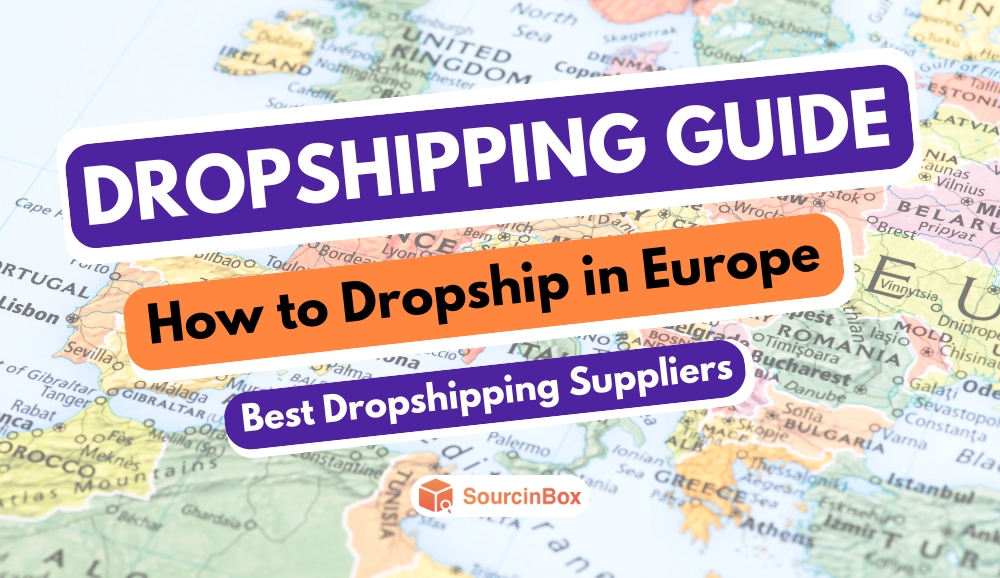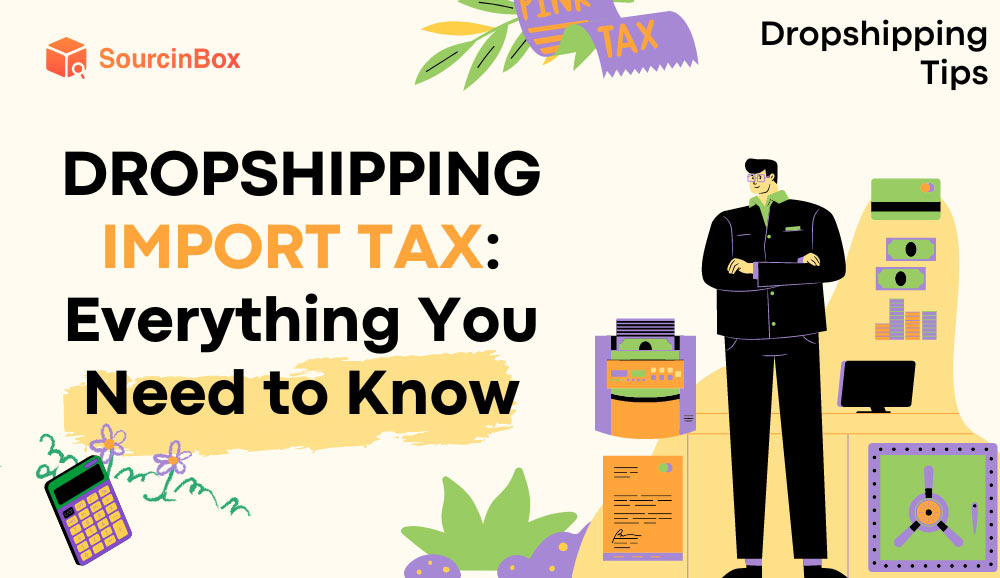How Will De Minimis Exemption Changes Impact Dropshipping in the US?

SIB Content Team
On September 14, 2024, the Biden-Harris Administration announced a series of measures aimed at reducing de minimis import volumes and enhancing trade enforcement. Additionally, the White House also advocated for Congressional action to implement broader reforms on the de minimis exemption.
Early this month, President Donald Trump issued new executive orders to block tariff exemption for packages of China under $800, which took effect Tuesday(February, 4). The regulatory change can bring predictable effects on cross-border businesses that rely on the de minimis exemption to import lower-cost Chinese products into the U.S. Dropshipping, a business model heavily reliant on importing low-cost items from abroad, is facing new threats as de minimis thresholds are stricter or strengthened regulations are imposed.
So, how exactly will these changes impact the dropshipping industry in the U.S.? And what actionable measures can dropshippers take to navigate potential regulatory shifts? This article will explore what to expect, the implications for U.S.-based dropshipping, and the strategies dropshippers can take to adapt and thrive amidst policy uncertainty.
What is De Minimis Exemption?
The de minimis exemption is a ruling in U.S. import law established at the beginning of the 20th century that eliminates import duties and taxes for shipments valued below $800 (originally $200).
Over the last decade, parcels imported to the United States claiming the de minimis exemption have increased significantly, from approximately 140 million a year to over one billion a year. Chinese Ecommerce giants Shein and Temu take advantage of the exemption to avoid potential tariffs and capture large market shares in a short period. However, criminals also use “de minimis shipments” to continuously import narcotics (including fentanyl), dangerous merchandise, counterfeits, and so on. Around 90% of all shipments that arrive in the U.S. enter through de minimise exemption today, the growing volume of de minimis shipments contributes to increasing difficulty in targeting and blocking illegal or unsafe shipments.
Overview of De Minimis Exemption Changes
Two consecutive presidents have taken actions related to constraining or even abolishing De Minimis Exemption, which are summarized below:
▶ The Biden-Harris Administration is using executive authority to stop the abuse of the de minimis exemption and protect American consumers, workers, and businesses. The announcement of the White House presents the following 3 aspects of highlights:
1. Exclude all shipments containing products covered by traffic imposed under Sections 201 or 301 of the Trade Act of 1974, or Section 232 of the Trade Expansion Act of 1962 from the de minimis exemption while enhancing information collection for such shipments.
2. Importers of consumer products to file Certificates of Compliance (CoC) electronically with CBP and CPSCat the time of entry, including de minimis shipments.
3. The Administration also calls on Congress to pass legislation by the end of this year to reform the de minimis exemption comprehensively.
Additionally, the U.S. government plans to enhance its procurement of specific textile and apparel products across federal agencies. It will also continue strengthening enforcement against illicit textile and apparel imports by intensifying efforts in several key areas: increasing scrutiny of small-package shipments, conducting joint special trade operations, expanding customs audits and foreign verifications, and broadening the Uyghur Forced Labor Prevention Act (UFLPA) Entity List.
▶ President Donald Trump signed three new executive orders on February 1, 2025, aiming to put the de minimis exemption on the chopping block for China, Canada, and Mexico imports--25% tariffs on goods from Canada and Mexico, and an additional 20% tariff on China-based imports.
The executive order issued on Feb 5, 2025, clarified that before the adequate systems are in place to process and collect these new tariffs efficiently, goods from China can still enjoy the duty-free exemption.
Tariffs on China brought with it the end of de minimis eligibility for “most products of China,” according to a U.S. Customs and Border Protection bulletin. Most China-based imports have been imposed an extra 20% tariff on top of the existing import tax rates. Take clothing as an example, which was originally taxed at 35%, but now is taxed at a total rate of 55% (35% + 20%). The total import tax is calculated as (order value + shipping cost) × 55%.
Impacts on Dropshippers in the United States
1. Increased Costs for Sourcing and Fulfillment
The prime impact for dropshippers selling in the United States must be the increasing costs of lower-value imports, which entered via de minimise exemption before. For dropshippers that rely on foreign suppliers--primarily from China--have often benefited from importing products under the $800 threshold, bypassing tariffs and customs duties. With the new ruling, these products may no longer qualify for the exemption, subjecting them to import fees, tariffs, and potentially higher logistical costs. The increased fees could decline profit margins, especially for those thriving with slim markups.
2. Higher Compliance and Regulatory Risks
The tougher administrative demands and potential penalties may drain the time and resources needed to fulfill orders efficiently. The requirement to file electronic CoC with U.S. CBP and CPSC is already in effect. Heightened customs scrutiny and stricter documentation requirements mean that non-compliance would result in fines, product seizures, or shipment rejections, adding new financial and operational risks. The stricter importing administration could also bring delays in delivery, further impacting customer satisfaction.
3. Declined Competitiveness against Large Players
Pricing competition in the e-commerce market is getting tougher than ever. As major e-commerce players continue to streamline their global operations, dropshippers may find it increasingly difficult to capture market share in a price-sensitive environment. China-founded platforms like SHEIN and Temu have expanded and diversified their supply chains and established more robust logistical networks to diminish their exposure to upcoming regulatory challenges. In comparison, small dropshipping businesses often lack the infrastructure or financial capacity to absorb the added costs and thus struggle to maintain profitability.
Impacts on Customers in the United States
1. Rising Prices for Imported Products
With added tariffs and additional fees affecting low-cost imports, U.S. consumers can be the first target for online retailers or platforms to pass the added costs and maintain profits. Customers may find higher prices for imported products, especially in textile and apparel products.
2. Longer Shipping Times
Besides, heightened customs scrutiny and increased regulatory checks would delay the processing of international shipments, which can extend overall delivery times. Dropshippers sourcing from foreign suppliers may struggle to maintain current delivery standards, which may potentially lead to dissatisfaction in the shopping experience.
3. Reduced Product Variety
For consumers who are getting used to affordable imported products available online, the domestic market can hardly fill their needs in the short term. As dropshipping sellers adapt to higher import costs, some may opt to narrow their product selection to focus on higher-margin items or reduce inventory to manage expenses. This reduction in variety could impact customers seeking a broad selection of affordable products online.
4. Potential Decline in Product Quality
Some dropshippers may take cost-cutting approaches like switching to lower-cost suppliers or compromising material quality to offset increased costs. Customers may find that the products once trusted for value no longer meet their quality expectations.
Strategies in Response for Dropshippers
Although not all regulations have yet been officially issued, dropshippers need to adjust business strategies to minimize potential losses. Preparing in advance will not only decline against regulatory impacts but position your dropshipping businesses for future growth. The following may inspire you:
1. Adjust Sourcing Strategies
For mature dropshippers, increasing local warehousing and broadening sourcing channels can effectively mitigate the impact of the new importing tax. Collaborating with a reliable sourcing agent like SourcinBox can enhance fulfillment efficiency and lower costs. Additionally, diversifying suppliers to include those from various regions can further insulate your business from supply chain disruptions and changing regulations.
2. Improve Logistics Efficiency
Improving logistics efficiency is also essential for facing rising costs and maintaining profitability. Fast delivery is crucial for consumer purchase decisions, particularly at higher price points. Implementing efficient order fulfillment systems and collaborating with logistics providers that offer multiple shipping options can enhance your competitive edge.
3. Enhance Service and Brand Value
Strengthening brand value and enhancing service quality makes premium pricing more acceptable. With 59% of 2024 customers prioritizing service over price, excellent customer support is key to maintaining loyalty despite higher pricing. The investment in improving customer service can encourage repeat purchases even when prices rise. Additionally, creating a strong brand narrative that resonates with your target audience can foster a strong customer base.
4. Implement Data Analytics
In facing the uncertainty, while recruiting new customers is necessary for online business, a loyal customer base is the secret to long-term revenue growth. Get valuable insights into customer behavior, sales trends, and inventory management through data analytics. Collect customer feedback to better understand customer needs in time for more effective targeting of marketing efforts and enhance ROI.
Conclusion
As markets grow more competitive and policies fluctuate, dropshippers must stay adaptable and make swift adjustments in advance. Collaborating with trusted partners can help mitigate risks and protect profitability, enabling you to navigate changes and thrive in the evolving e-commerce landscape.










